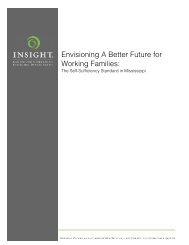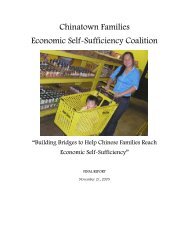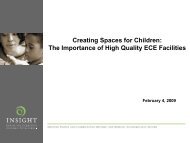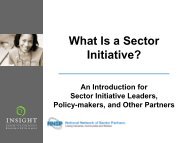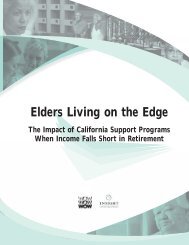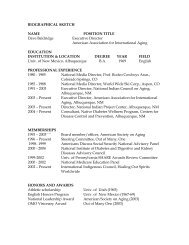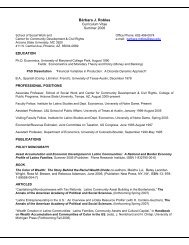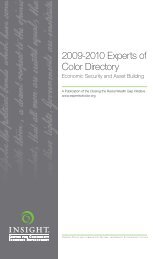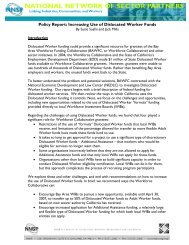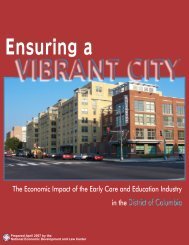Overlooked and Undercounted - Insight Center for Community ...
Overlooked and Undercounted - Insight Center for Community ...
Overlooked and Undercounted - Insight Center for Community ...
Create successful ePaper yourself
Turn your PDF publications into a flip-book with our unique Google optimized e-Paper software.
12 — OVERLOOKED AND UNDERCOUNTED<br />
less education are much more likely to have insufficient<br />
income than those with more education. Over half (55%)<br />
of households in Mississippi with less than a high school<br />
education have inadequate incomes, while 37% of those<br />
with a high school degree or its equivalent, 30% of those<br />
with some college, <strong>and</strong> only12% of those with a college<br />
degree or more have inadequate incomes (see Appendix<br />
Table B-9). Nonetheless, it should be noted that 14% of<br />
all householders in Mississippi, <strong>and</strong> 25% of those with<br />
incomes below the St<strong>and</strong>ard, lack a high school degree.<br />
The remaining 75% of Mississippi households below<br />
the St<strong>and</strong>ard have a high school degree or more, <strong>and</strong><br />
more than 31% have some college or more, yet still lack<br />
adequate income.<br />
Although advanced education reduces income<br />
inadequacy <strong>for</strong> all race/ethnicity <strong>and</strong> gender groups in<br />
Mississippi, four patterns are apparent when we examine<br />
the impact of education separately by race <strong>and</strong> gender<br />
(see Figure 6).<br />
First, as education levels increase, income inadequacy<br />
rates decrease <strong>for</strong> both men <strong>and</strong> women, but more<br />
dramatically <strong>for</strong> women, especially African-American<br />
women. Thus, the relationship between higher<br />
education <strong>and</strong> relatively higher levels of income<br />
adequacy are greatest <strong>for</strong> African-American women. In<br />
fact, when the education attainment of the householder<br />
increases from a high school degree to a Bachelor’s<br />
degree or higher, income inadequacy plummets from<br />
67% to 26% <strong>for</strong> African-American women, <strong>and</strong> from<br />
36% to 11% <strong>for</strong> White women. In contrast, men have<br />
lower rates of income inadequacy even with less<br />
education: men at the lowest educational level, those<br />
with less than a high school education, have an income<br />
inadequacy rate of 42%—compared to 72% <strong>for</strong> women<br />
lacking a high school degree—<strong>and</strong> there<strong>for</strong>e experience<br />
less of a decline with increased education.<br />
Second, as educational levels increase, the differences in<br />
income inadequacy rates between men <strong>and</strong> women of<br />
the same race/ethnicity narrow. This is most apparent<br />
<strong>for</strong> White women: Figure 6 shows that White women<br />
Figure 6. Households Below the Self-Sufficiency St<strong>and</strong>ard by Education, Race, <strong>and</strong> Gender:<br />
Mississippi 2007<br />
PERCENT OF HOUSEHOLDS BELOW THE STANDARD<br />
100%<br />
MALE: WHITE<br />
MALE: BLACK OR AFRICAN AMERICAN<br />
80%<br />
FEMALE: WHITE<br />
FEMALE: BLACK OR AFRICAN AMERICAN<br />
60%<br />
40%<br />
20%<br />
0%<br />
LESS THAN<br />
HIGH SCHOOL<br />
HIGH SCHOOL<br />
DIPLOMA OR GED<br />
SOME COLLEGE OR<br />
ASSOCIATE'S DEGREE<br />
BACHELOR'S DEGREE<br />
OR HIGHER<br />
EDUCATIONAL ATTAINMENT OF HOUSEHOLDER



